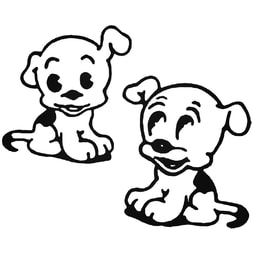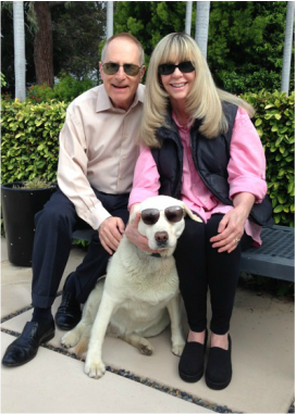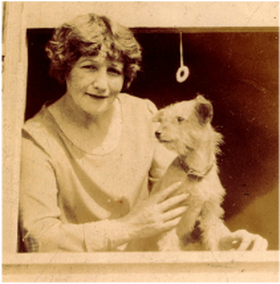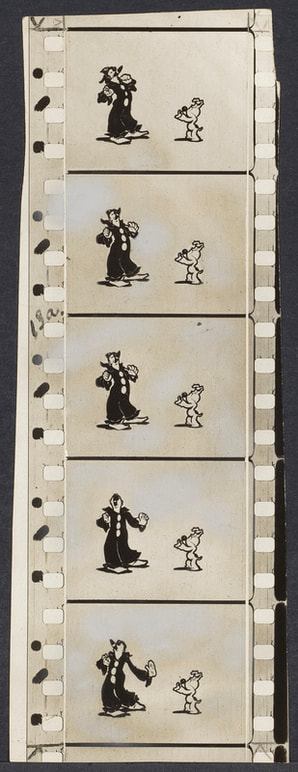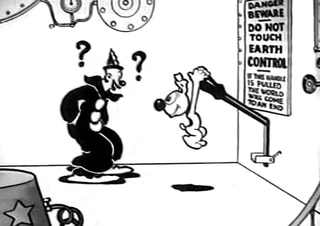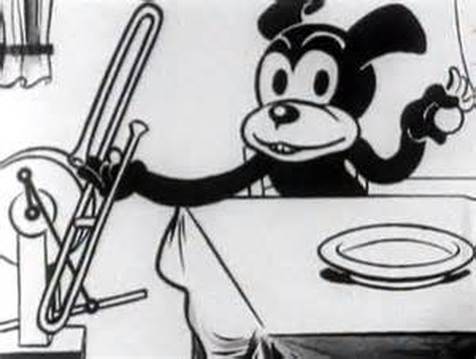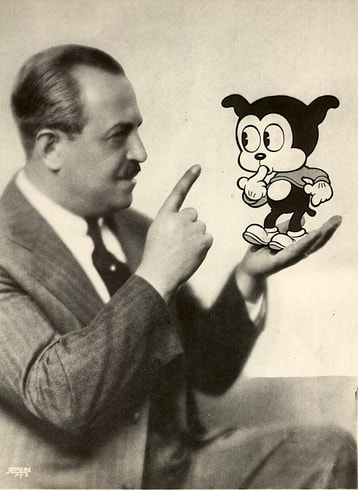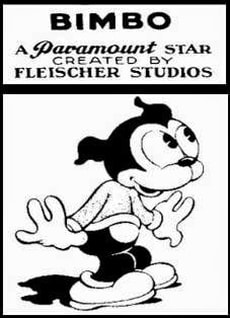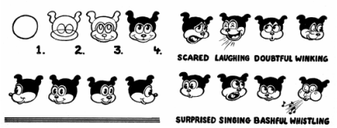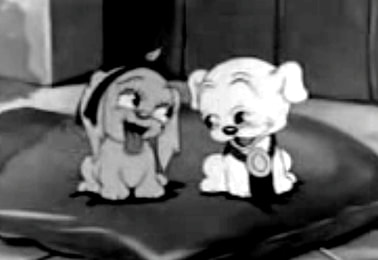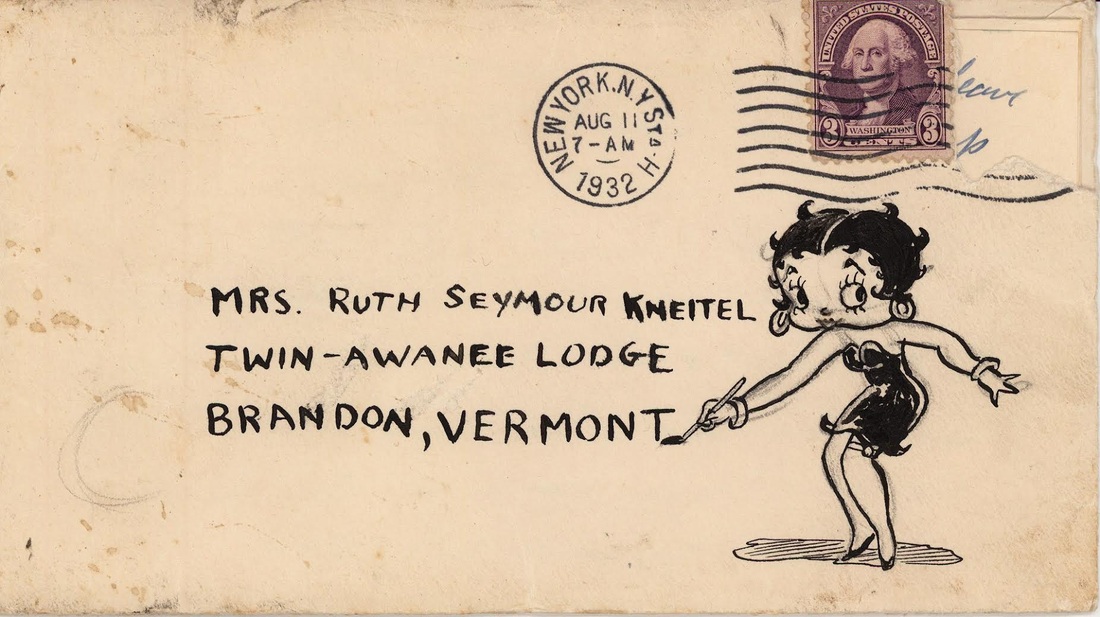The Clown's PupThe very first dog to appear in a Fleischer film may well be the rotund pup seemingly drawn by Koko himself in The Clown's Pup, one of Max Fleischer's earliest animated cartoons, created in 1919.
We are thrilled, thanks to animation historian Ray Pointer, to be able to share this marvelous and extremely rare film with you in its entirety. Although this version of the film includes music, the original film would have been silent. As Ray Pointer points out in regard to this film:
|
The importance of film preservation is vital to the survival of Max Fleischer's work. Only half his work for Bray is known to survive, including only 10 of the 20 Out of the Inkwell films. The earliest and the rarest is The Clown's Pup. It has survived through several generations of duping on cheap Home Movie releases. Here is the best I can do with it until a better print source surfaces. It's interesting to note that the running time for this film is not quite 3 minutes - half the time of the standard films that usually ran 6-7 minutes. As the opening credits point out, Max did all the drawings for this by himself - working, of course, with his brother Dave whose early clown antics formed the basis of the Koko the Clown character.
|
|
|
|
|
One of the intriguing things about Bimbo’s early films is how completely his appearance seems to vary from picture to picture. The truth is that the kind of visual consistency we expect today wasn’t considered important in the early days of animation. It likely wasn’t surprising to audiences that a character’s appearance seemed to change from one film to the next. In one cartoon Bimbo might be a white dog, in another film a black dog. Historian Ray Pointer notes that Bimbo’s appearance continued to vary until 1931. The version of Bimbo that appeared in The Herring Murder Case became the standard and best known version of Bimbo: a short, round, black dog who behaved like a human.
Bimbo was still the star of the Talkartoons series in August 1930 when the script for Dizzy Dishes called for a female entertainer to play opposite him. This new character, a sexy singer with a bouncy behind, was mostly human but had long floppy dog-like ears. To look at her now, there is no doubt that this flirty singer sporting fashion-forward pin curls and a short black dress would soon be known to the world as Betty Boop. Betty’s popularity caught on like wildfire and soon she was receiving star billing, with her boyfriend Bimbo in a supporting role. By 1932 Betty was so popular that the Talkartoon series was re-named the Betty Boop series.
The fact that Betty eventually lost her floppy ears and became 100% human while Bimbo remained a dog didn’t seem to bother audiences. Neither did the fact that Betty’s dog-boyfriend wore a sweater and shoes, but no pants. People seemed to accept that Betty lived in a cartoon world where anything was possible!
This, however, was not a view shared by the drafters of the Motion Picture Production Code. Adopted by the film industry in 1930 (though not fully enforced until 1934), the Code sought to clean up the film industry by censoring work that was deemed to be immoral or overly suggestive. In light of these new guidelines, Betty’s relationship with Bimbo was very questionable indeed, even raising questions of bestiality. Quite simply: Bimbo had to go. In the film Is My Palm Read, currently featured in our online theater, the Fleischer animators are clearly taking advantage of what they know is one of their last opportunities to release a film prior to the enforcement of the Production Code rules. You can click here to watch and learn more fun facts about Is My Palm Read in our online Theater. Shortly after, in 1933, Bimbo makes his last film appearance in the film I Heard.
Myron Waldman, the Fleischer Studios Head Animator who created Pudgy, was the Head Animator for most of the Pudgy films and also had the distinction of overseeing more Betty Boop films than any other Studio animator, including this marvelous film: Pudgy Picks a Fight.
When he died in 2006 at the age of 97, the Associated Press reported that Myron Waldman was the last surviving Head Animator from Fleischer Studios. After his death, Myron’s son, Steven wrote that: It was shortly after midnight Saturday Feb. 4, 2006, my father legendary Fleischer animator Myron Waldman passed away, When my brother Robert arrived, he pointed out dad's final resting position had his right hand as if he was holding a pencil and his left hand flat as if he was holding paper. What made this night even more strange was when Mom told me to inform the nurses station of Dad’s passing, the nurse that came on duty at 11:30 was wearing a Betty Boop/Pudgy scrub outfit. Needless to say I was stunned. I asked her why she was wearing this outfit, she said ”I love Betty Boop especially that little dog,” I replied that the man that drew Betty Boop and created her dog just passed away in the hospice on this floor! She had no idea that Dad was there. She was shocked! It seemed Dad had his last act! RIP. We Miss You!!!!!
Betty Boop helps an adorable pup get on the right foot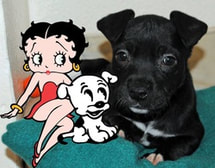 Betty Boop, Pudgy and... Betty Boop! Betty Boop, Pudgy and... Betty Boop!
In January 2015 this adorable pup, missing one of her back paws, was found wandering the streets of Chicago and taken to PAWS Chicago, a no-kill animal shelter, where she was given the name Betty Boop.
Later that month, Chicago's FOX 32 shared Betty's story and invited its viewers to donate towards the cost of providing Betty with a prosthetic paw - and that's where we come in. When we at Fleischer Studios heard this story, we knew exactly what Betty Boop herself would do; and so that's exactly what we did! We reached out to PAWS and donated the entire cost for the puppy's prosthesis. SPECIAL THANKS to Ray Pointer and Steven Waldman.
Shamus Culhane's quote about Bimbo is from his book Talking Animals and Other People. |
